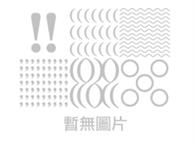
14
0
0
0
0
Cellular automaton modeling of biological pattern formation : characterization, examples, and analysis
- 作者: Deutsch, Andreas, author.
- 其他作者:
- 其他題名:
- Modeling and simulation in science, engineering and technology.
- 出版: Boston, MA : Birkhauser Boston :Imprint: Birkhauser
- 版本:Second edition.
- 叢書名: Modeling and simulation in science, engineering and technology,
- 主題: Pattern formation (Biology) , Cellular automata--Mathematical models. , Mathematics. , Physiological, Cellular and Medical Topics. , Mathematical Modeling and Industrial Mathematics. , Simulation and Modeling. , Applications of Mathematics. , Computer Appl. in Life Sciences.
- ISBN: 9781489979803 (electronic bk.) 、 9781489979780 (paper)
-
FIND@SFXID:
 CGU
CGU
- 資料類型: 電子書
- 內容註: Introduction and Outline -- On the Origin of Patterns -- Modeling Biological Pattern Formation -- Cellular Automata -- Random Movement -- Cell Migration -- Adhesive Cell Interaction -- Alignment and Cellular Swarming -- Growth Processes -- Pigment Cell Pattern Formation -- Tissue Development -- Tumor Growth and Invasion -- Turing Patterns and Excitable Media -- Discussion and Outlook -- Appendix A: Cell Migration -- Appendix B: Growth Processes -- Appendix C: Tumor Growth and Invasion -- Appendix D: Turing Patterns -- Appendix E: Excitable Media -- Appendix F: Isotropy, Lattices, and Tensors -- References -- Index.
- 摘要註: This text explores the use of cellular automata in modeling pattern formation in biological systems. It describes several mathematical modeling approaches utilizing cellular automata that can be used to study the dynamics of interacting cell systems both in simulation and in practice. New in this edition are chapters covering cell migration, tissue development, and cancer dynamics, as well as updated references and new research topic suggestions that reflect the rapid development of the field. The book begins with an introduction to pattern-forming principles in biology and the various mathematical modeling techniques that can be used to analyze them. Cellular automaton models are then discussed in detail for different types of cellular processes and interactions, including random movement, cell migration, adhesive cell interaction, alignment and cellular swarming, growth processes, pigment cell pattern formation, tissue development, tumor growth and invasion, and Turing-type patterns and excitable media. In the final chapter, the authors critically discuss possibilities and limitations of the cellular automaton approach in modeling various biological applications, along with future research directions. Suggestions for research projects are provided throughout the book to encourage additional engagement with the material, and an accompanying simulator is available for readers to perform their own simulations on several of the models covered in the text. With its accessible presentation and interdisciplinary approach, Cellular Automaton Modeling of Biological Pattern Formation is suitable for graduate and advanced undergraduate students in mathematical biology, biological modeling, and biological computing. It will also be a valuable resource for researchers and practitioners in applied mathematics, mathematical biology, computational physics, bioengineering, and computer science. PRAISE FOR THE FIRST EDITION "An ideal guide for someone with a mathematical or phys
-
讀者標籤:
- 系統號: 005413439 | 機讀編目格式
館藏資訊
